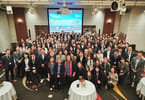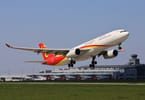From US soldiers introducing chewing gum to France in 1917 to a toothbrush from a trench and newfangled machine guns and shells, the carnage of the first world war has been given a revolutionary treatment in a new French war museum near Disneyland Paris.
It hopes to draw tourists away from Mickey Mouse, and impress the realities of a war that killed 22 million on a generation who only know conflict through video games .
But the Museum of the Great War in Meaux, inaugurated by the French president, Nicolas Sarkozy, last month and already exceeding expected visitor numbers, is also the first move in France’s new campaign to develop itself as the world capital of war tourism.
France is still the world’s number one tourist destination. But while its reputation for shopping has slumped, the government now hopes its wealth of battlefields, memorial sites, trenches and war cemeteries holds the key to attracting tourists. More than 20 million tourists a year visit France for its battle sites and war history. That number is expected to soar with the centenary of the first world war in 2014 and the 70th anniversary of the D-day landings, already triggering a round of renovations and new themed tours.
While historians see the current boom in war tourism as a opportunity to educate on the horrors of conflict and importance of collective memory, the French government has also broken the taboo surrounding the money to be made from war tours. This year, it hosted its first national conference on war tourism, which France prefers to call tourism of remembrance.
“This is a tourism of memories, of pilgrimages, of remembrance, of commemorations,” said Serge Barcellini, archive director at the defence ministry. Last year, France’s 155 war museums, memorials and historical sites which charge entry fees attracted 6.2 million people, with a turnover of €45m (£38m). Around 45% of the visitors were foreign, many British.
France leads Europe in war tourism partly because it was the setting for much of the fighting in the first world war. The museum in Meaux houses one of Europe’s most varied collections, from taxis to uniforms, amassed by a French amateur archeologist, Jean-Pierre Verney, 65, who for many years kept it all in his home.
Michel Rouger, the museum director, said: “I wanted to spark such an interest among visitors that they went straight home to root in their attics and look for their grandparents’ things. It’s about the human aspect. Since the museum opened, we’ve received one or two parcels a day in the post from French people sending letters, postcards, bits of uniform that they’ve found.”
Stéphane Grimaldi, director of the Mémorial de Caen, in Normandy, one of France’s most visited war museums, said: “This current taste for history comes partly because we’re living in a time of confusion, in a world that seems to have lost its bearings. People try to anchor themselves by striving to understand the past. It’s as if we’re in a car facing a thick curtain of fog and looking in the rear-view mirror.”
He said there was an important generational shift. The Meaux museum opened months after the death of the last known combat veteran of the first world war, Claude Choules, and the 70th anniversary of D-day will probably be the last decimal anniversary attended by veterans.
If large-scale war tourism is growing, there has also been a boom in smaller, more personalised war memory tours. James Power, a former superintendent in Dorset police who runs one to the Somme, often for people tracing relatives’ stories, said: “Interest has grown phenomenally since I started in 1996. Visitors are younger than many think, they tend to be over 40 and the average age is around 50.”
WHAT TO TAKE AWAY FROM THIS ARTICLE:
- While historians see the current boom in war tourism as a opportunity to educate on the horrors of conflict and importance of collective memory, the French government has also broken the taboo surrounding the money to be made from war tours.
- From US soldiers introducing chewing gum to France in 1917 to a toothbrush from a trench and newfangled machine guns and shells, the carnage of the first world war has been given a revolutionary treatment in a new French war museum near Disneyland Paris.
- But the Museum of the Great War in Meaux, inaugurated by the French president, Nicolas Sarkozy, last month and already exceeding expected visitor numbers, is also the first move in France’s new campaign to develop itself as the world capital of war tourism.






















